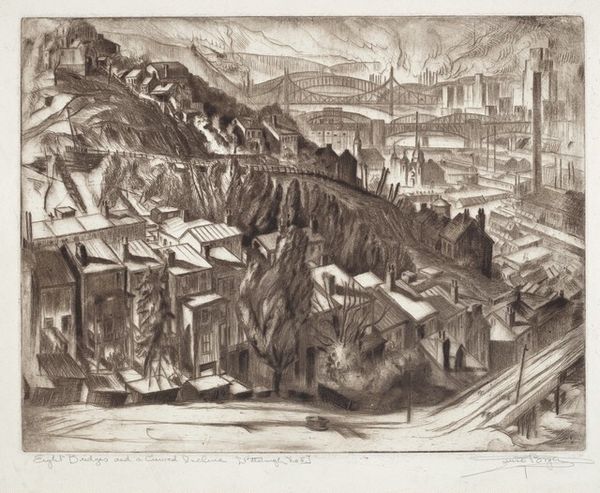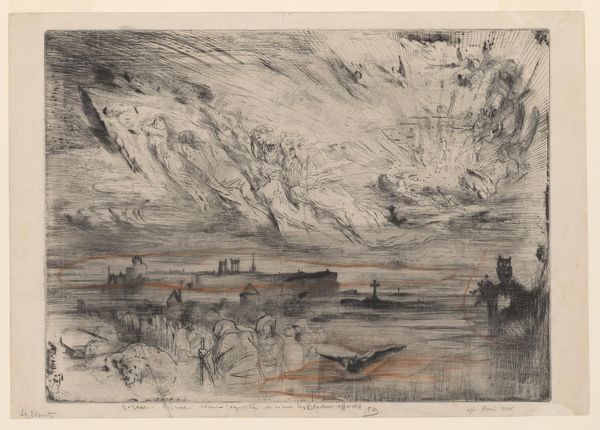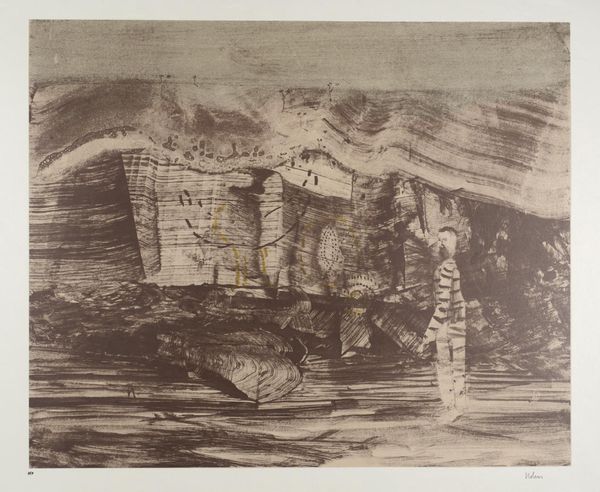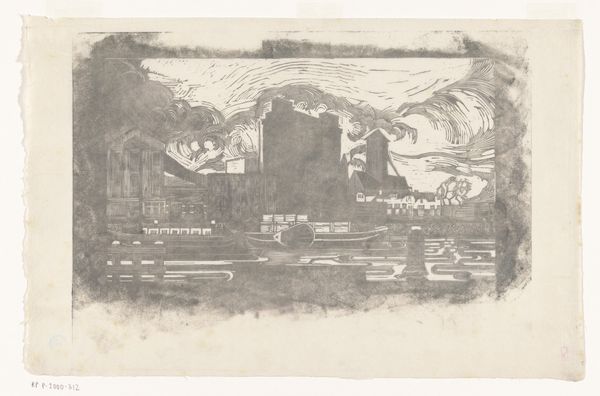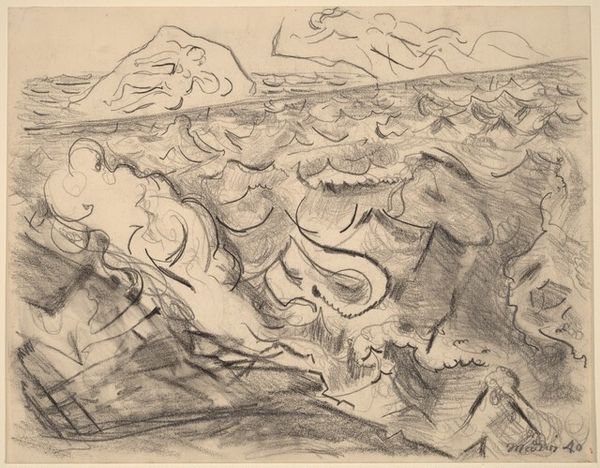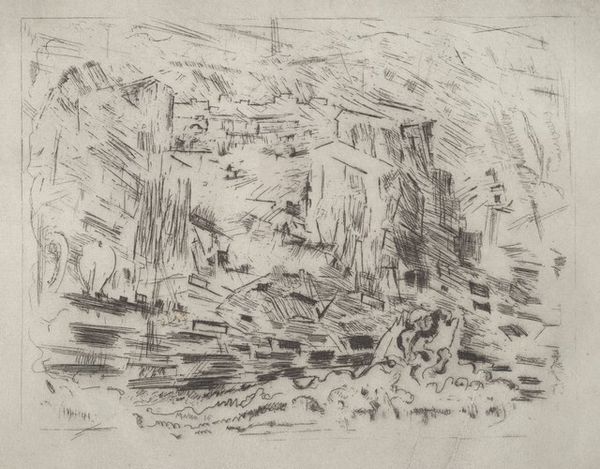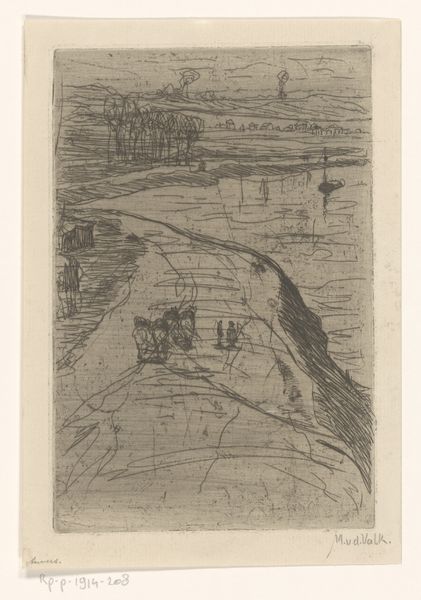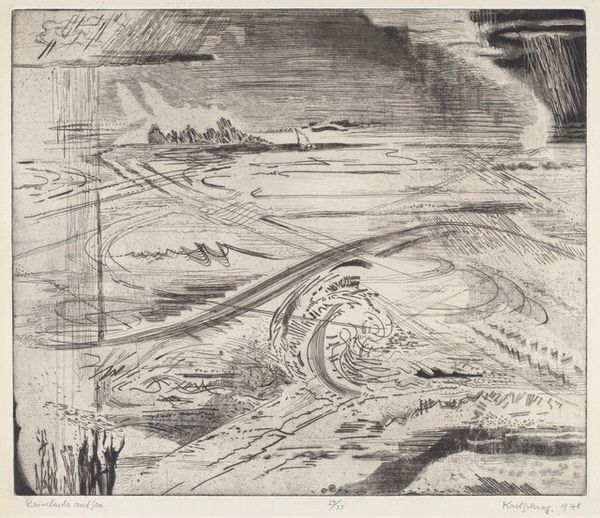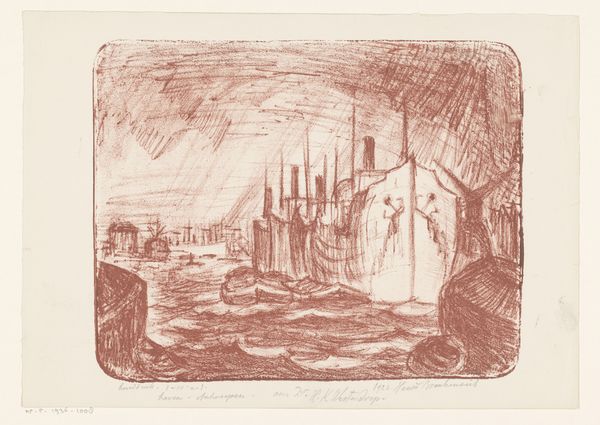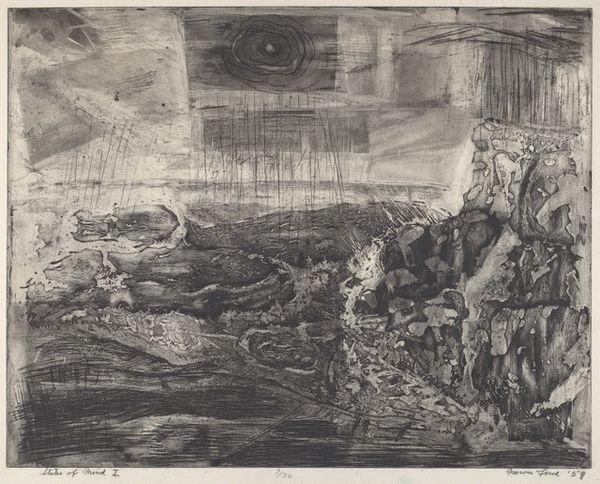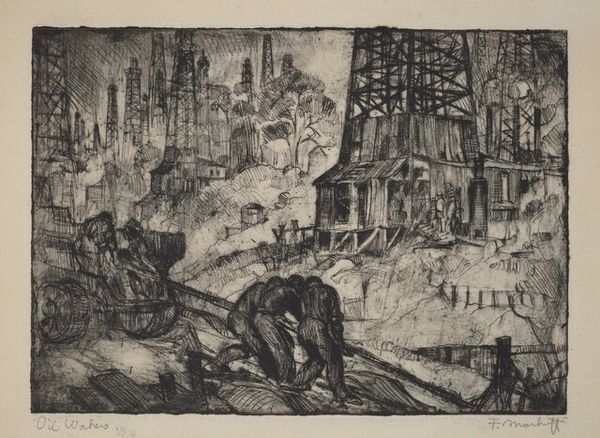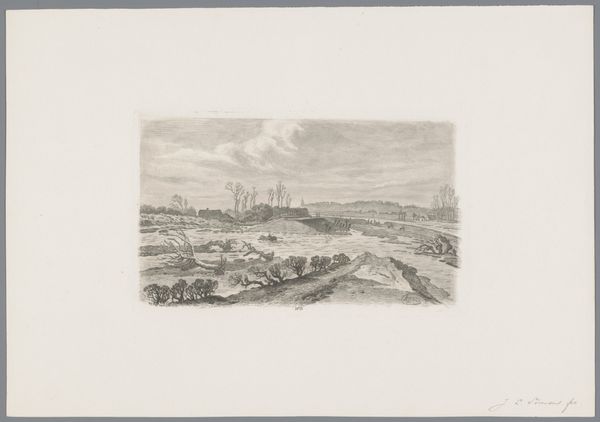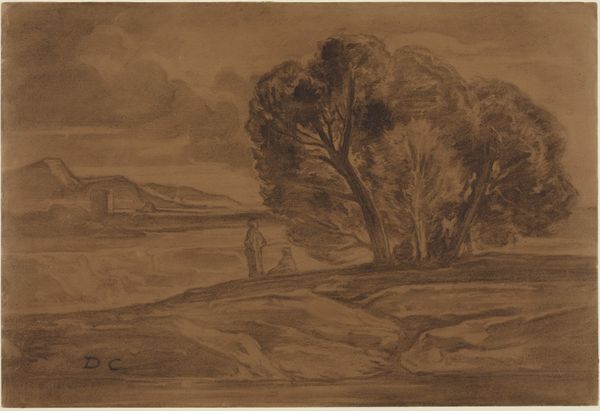
print, etching
# print
#
etching
#
landscape
#
cityscape
#
realism
Copyright: National Gallery of Art: CC0 1.0
Editor: Okay, next up we have "The Crenellated Hill," an etching print. It feels a bit gloomy, a little ominous even, especially the way the lines define that central drop-off. What’s your take? Curator: The title itself piques my interest. Crenellations speak of fortifications, like battlements on a castle. Does the artist suggest that this "hill" – which clearly houses a community – is somehow fortified, or perhaps under threat? It is a psychological space as much as it is a physical one. Editor: That’s interesting, I hadn’t considered the symbolic implications of "crenellated." What kind of threat could a small village be facing that turns into this type of symbol? Curator: The houses are all facing this gap like they were about to fall into the abyss; the abyss is ourselves in an alienated world that doesn't have hope to hold to. Etchings like this often tapped into anxieties of the modern age – industrialization, urbanization, social upheaval. Editor: So you’re saying that maybe the artist is trying to tap into those anxieties. What’s your opinion, does it work? Does the image manage to transmit the emotion that the artist wanted? Curator: I believe so. Look how the line work almost claws at the paper; even the sky seems heavy, burdened. It isn't a peaceful landscape, is it? And the architectural structures imitate prison towers. Editor: No, you’re right, it definitely isn’t peaceful. Thanks, that really shifted how I see the piece. It is way more sinister than it initially appeared to me. Curator: These landscapes hold more than meets the eye, and artists play into our visual expectations to subtly shift our perception of reality. We internalize such powerful cultural artifacts in our visual repertoire.
Comments
No comments
Be the first to comment and join the conversation on the ultimate creative platform.
